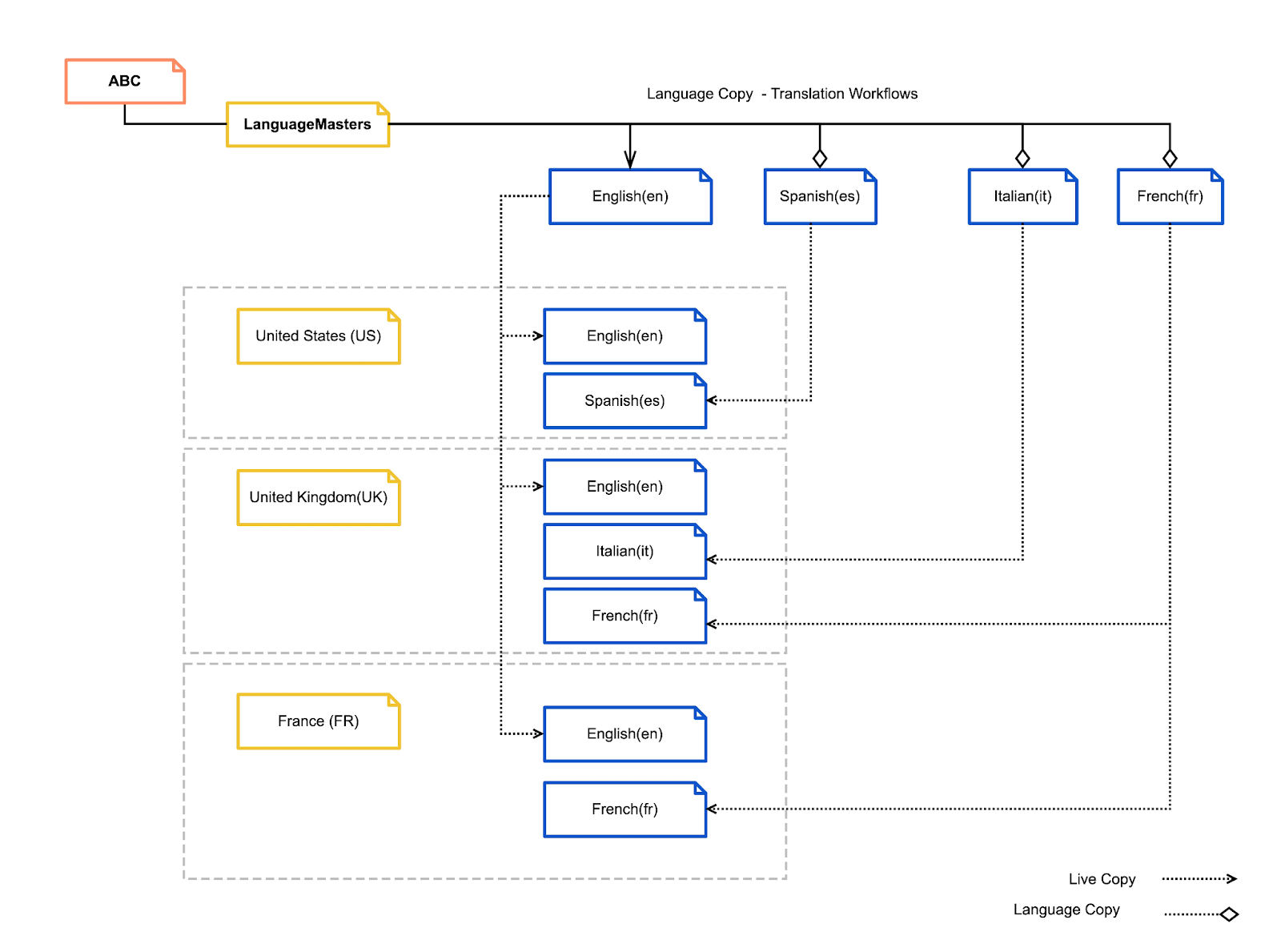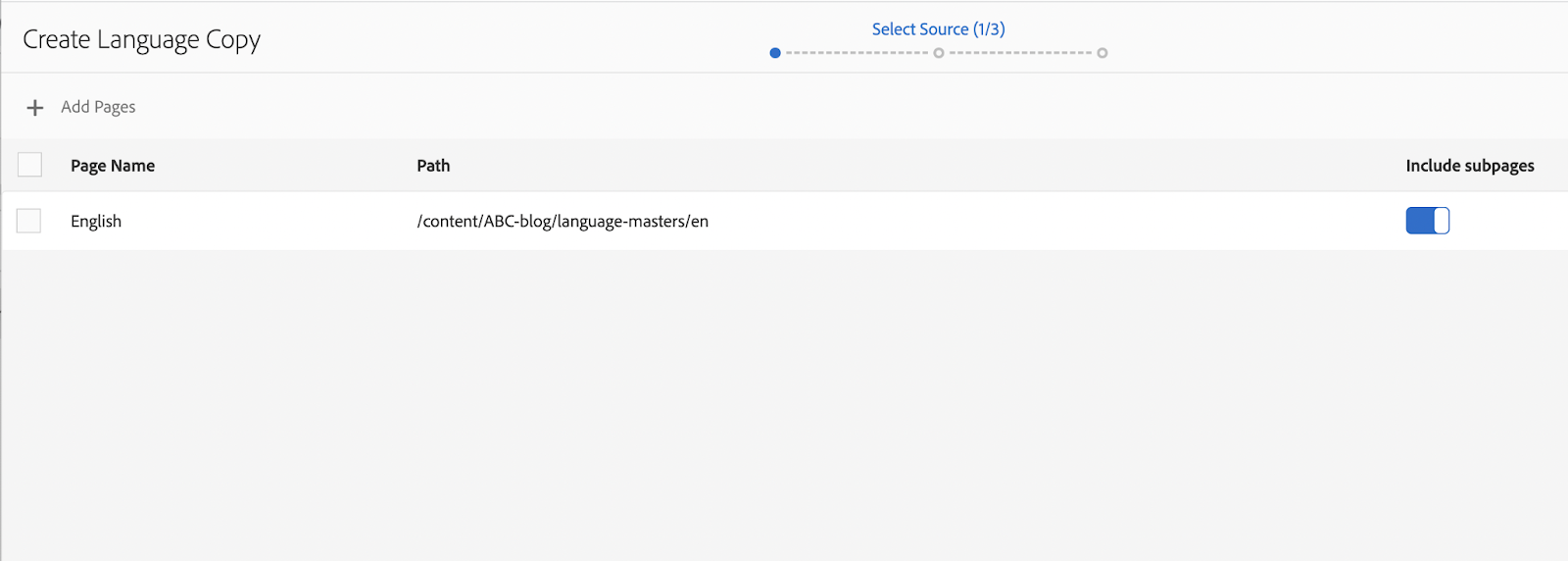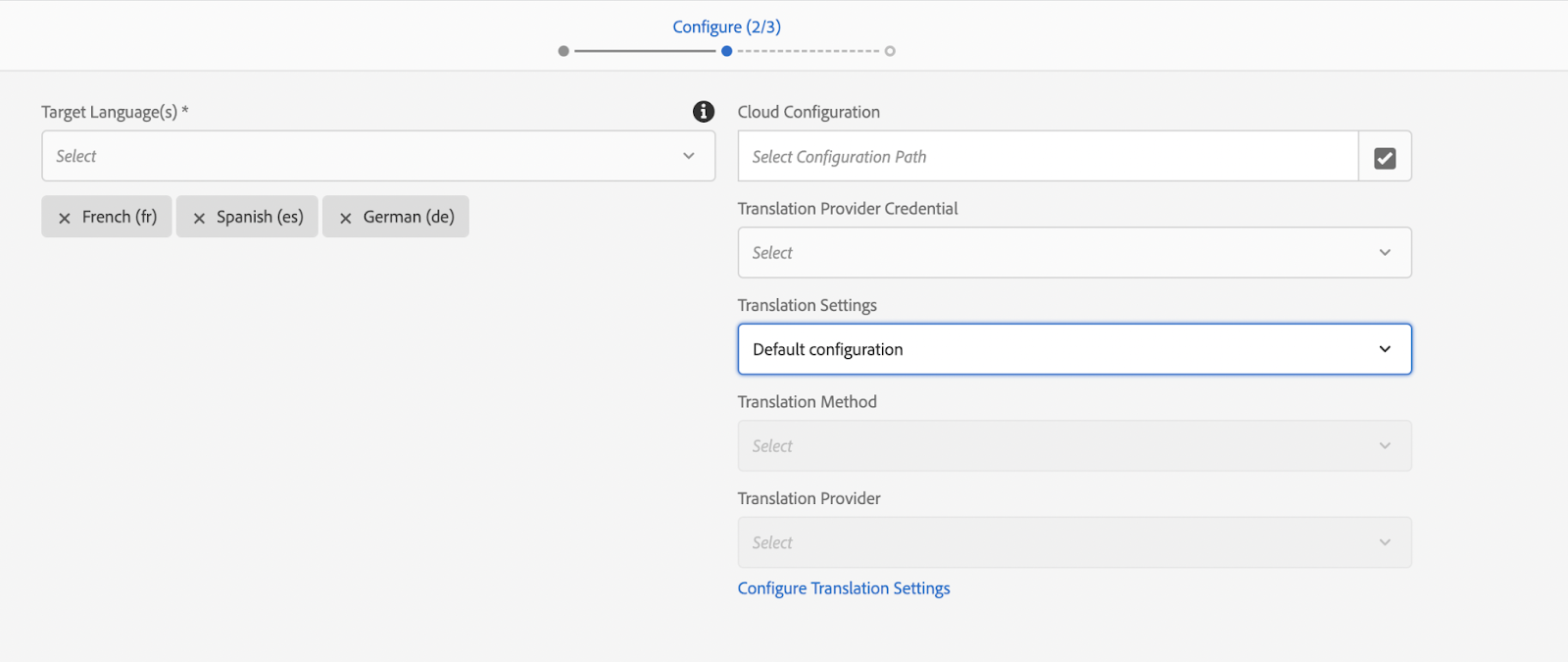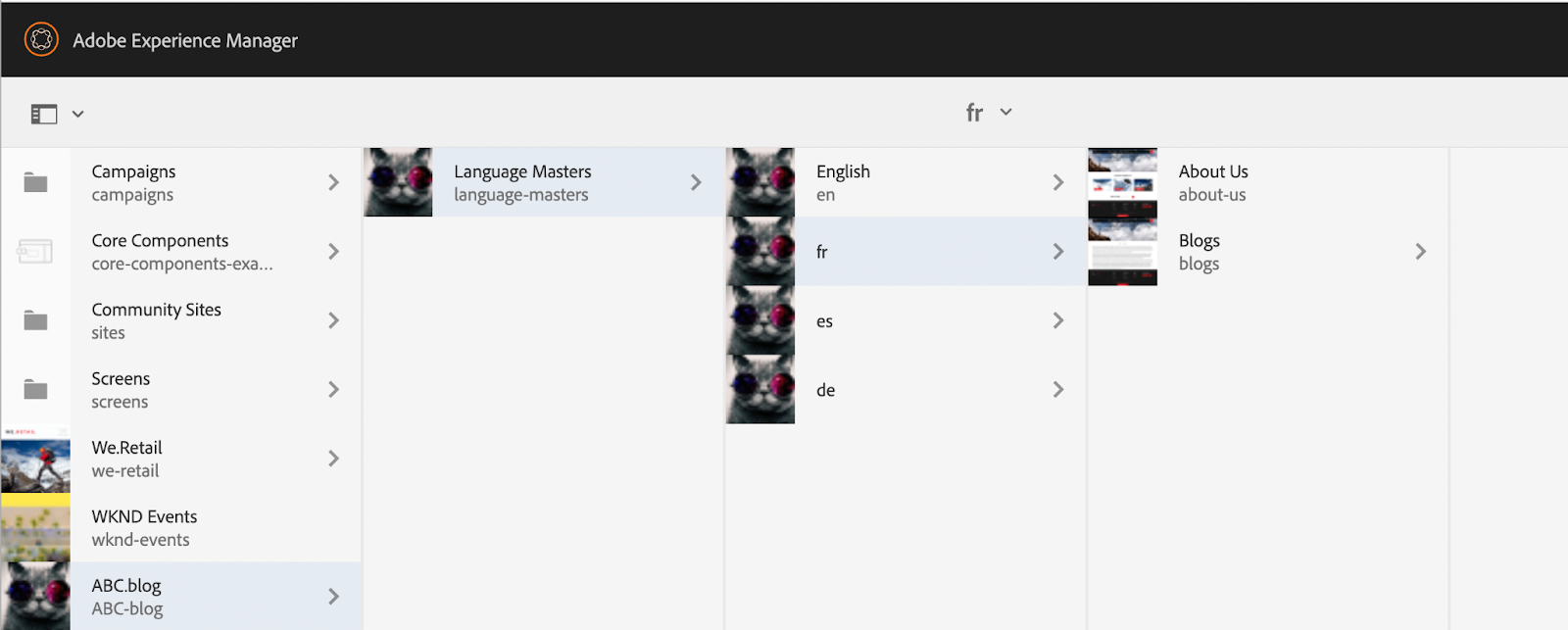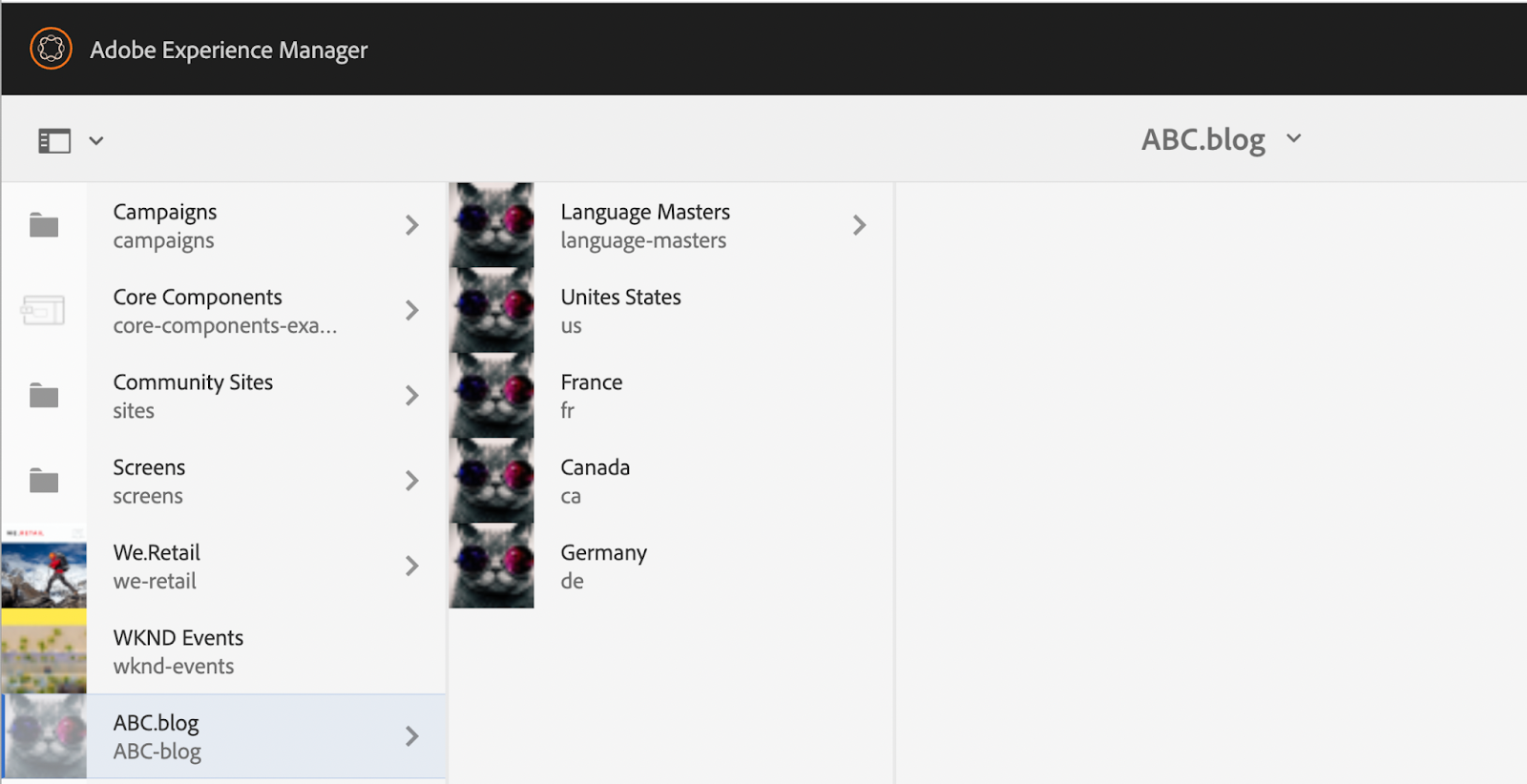An Introduction to Multi‑Site Management With Adobe Experience Manager

Oftentimes, brands overlook the possibility of maximizing their content investments through content reuse. While it looks easy to copy and paste content over and over again, authors often end up creating different versions of the same content. Then all of a sudden it becomes too complex to manage. Add to this the expansion of content across languages and regions, and the copy and pasting approach is no longer sustainable.
In the current world, a content team is made up of diverse roles, they come up in all sizes and they need to be scalable on demand. Creating quality content needs time and cost, and requires a seamless collaboration across these roles. Any change in content would have an impact across functional units and with a copy and paste approach it gets difficult to collaborate. Let us take a step back and look at the different types of content reuse.
Content Reuse Strategies
Here are a variety of scenarios where a content reuse strategy could come into play.
Localization & Translation: Scenario when we reuse the content from a source language and translate it to other languages on your regional sites.
Unified Content Experience: Scenario where your customers might need to look at the same content across sites. Curation of content can happen in one place and can be reused and tracked across multiple sites.
Structural Content Reuse: Websites also deal with structured content that needs to be managed in a centralised location and customised based on per Market site basis. These are content types that when changed need to reflect automatically across the websites.
Fragment Reuse: When a block of content has to be reused across sites, with subtle variations across regions/languages, we can reuse the Experience fragments.
To solve the above problems where manual work is needed Adobe Experience Manager (AEM) has introduced the concept of Multi-Site Manager (MSM). MSM enables us to easily manage multiple websites that share common content.
Multi-Site Manager Use Cases
Before we start, let’s explore a hypothetical scenario of the brand ABC operating out of multiple regions and serving customers in multiple languages:
- ABC is present all over the North American continent with the U.S. as its central office.
- ABC is also present in multiple regions in multiple languages.
- Regional sites are comprised of 70-80 percent content from U.S. sites.
- Regional sites may have some blogs which are not present on U.S. sites.
- ABC engages third parties for the translation of content and content is translated as-is to the regional language.
From the requirements we understand that there is:
- A high percentage of content reuse from the U.S. site to other regional sites.
- Content reuse across languages with external translation. There is an opportunity to reuse the translation dictionary to reduce the translation cost.
Now, if we start designing the above site features we would end up creating duplicate pages in each regional site, and getting the content synced between the U.S. and regional sites will be a headache to manage manually.
Proposed Multi-Site Manager Strategy for ABC WebSite
In the above structure of the ABC site project, the language masters help to manage the pages for all supported languages, en is the global master, and other languages are created as a language copy from en. The live copies through blueprint can be used to define country-specific websites, the content is easily managed through language masters and rolled out to individual sites, and the inheritance can be broken whenever required.
Translation vendors employ translation memory to optimize the total cost of translation. Sentences translated often can be retrieved from translation memory thereby saving cost and time. By organising the content for reuse and leveraging a translation management system the translation cost and effort can be significantly reduced.
Let us now quickly see how to enable the ABC site (scenario mentioned at the start of the article) through MSM structure.
Start by creating a language master website structure (in our case en — /content/ABC-blog/language-masters/en), create language-master and en pages under site root, and also require child pages under en page.
Next, create a language copy from en master e.g., es, fr, etc. — en is the global master and the content is translated to different language masters.
Then create language copy.
Add required pages from en language master. We selected en with all its subpages. Click on "Next."
Select the target language from the dropdown and translation settings. Click on "Next."
Now, the language master setup is completed and the structure will look like this:
Create the Country pages at the same level as language masters.
Create a live copy from the corresponding language masters to the target country folders.
Create a live copy in U.S.
Select the language master and select the destination.
Enter the Title, and Name, select the rollout configs then click on "Create."
Repeat the same steps for all the languages supported for a specific country.
Next, create the Blueprint configuration under Tools > Sites > Blueprints > Create.
Select default Blueprint Template and source as the Language Master.
Now, let’s change some content on the en master and rollout the changes to the live copy.
There are two ways to rollout the changes:
Rollout from Blueprint (language-master), this will rollout the changes to all the live copies associated. Select the page and open the properties of the page, then click on the Blueprint section.
Rollout from the reference tab of the live copy, this will rollout the changes only for this particular live copy. Select the live copy page and from the left dropdown click on references. Click on Blueprint and then on the content path.
We can then compare the content of the blueprint and live copy before rollout.
Now, click on Rollout and check if the content matches the language master.
Instead of Rollout, we can also sync the changes to the live copies. Select the live copy page > Properties > Select Live Copy tab > Click on Synchronize.
There are two more options on this live copy tab.
Suspend: Suspending live copy inheritance for a page is a temporary action. Once suspended the Resume action becomes available, allowing you to reinstate the live relationship.
Detach: Detach permanently removes the live relationship between a live copy and its source/blueprint page.
Alleviate Content Reuse Challenges
AEM’s MSM features can help alleviate challenges when reusing content across multiple sites and locations. While this article focused on translation, there are many other factors to consider, such as localization, when evaluating MSM options.
We hope to cover other factors and nuances related to MSM in future articles. In the meantime, we encourage you to refer to Adobe’s documentation regarding reusing content with MSM.
